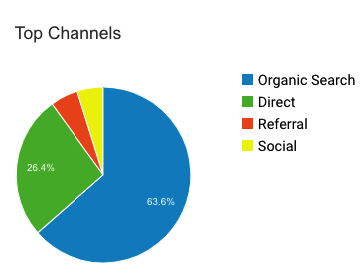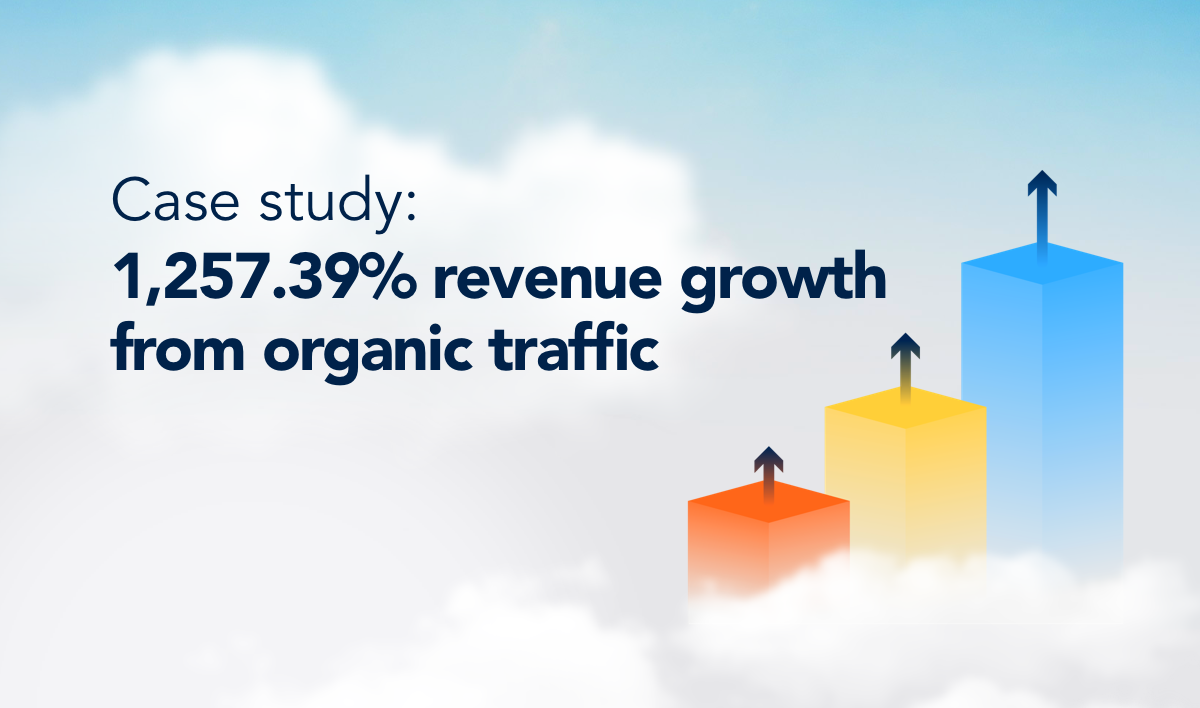
Did you know that the famous marketing adage “Content is king” originates from Microsoft founder, Bill Gates’ 1996 essay of the same title? Well, more than two decades later, it still rings true in ways far beyond what was originally intended.
Content plays a key role in any SEO strategy and should go hand in hand with any optimization efforts. The tricky part – creating good content that ranks well.
What is content SEO?
Content SEO is the “art” of writing content that helps your site rank high in search engines, with the ultimate and elusive goal of being the very first search result. Achieving this involves both writing and structuring content in accordance with certain principles. The search engines read your content to see how it fares in terms of keywords, text quantity, keyword density, among other factors. The more checkboxes you tick, the better ranked your content is.
Generally, the content SEO methodology follows these 4 basic steps:
- Keywords research – during which you discover what search terms your key audience uses to find products similar to yours; you find the best possible target keywords for your industry; and you determine the possibility for your site to rank for those;
- Content development – the writing of the new content with the involvement of a professional copywriter;
- Implementation – placing the new, optimized content on the site of the client;
- Monitoring – frequent checks on how the new content is impacting the rankings.
It’s also important to note that ranking high in SERPs doesn’t solely depend on the content. The technical part of your site’s SEO is also essential, so it is strongly recommended to ensure it’s in place and without major errors, before starting to tackle the content aspect of SEO. You can check out this case study to see how implementing technical SEO best practices helped increase revenue by 77%.
Background of the SEO audit
At Scandiweb, we had a chance to work on content SEO for a client from a very specific and niche industry (the client sells FTM Prosthetics) with the majority of customers being from the United States.
Previously, we had done a technical SEO setup for the client’s Magento 1 store, however, the client opted to migrate to Magento 2, and just like that the SEO implementations were gone. What’s more, as with every platform migration – organic traffic fell dramatically to a near critical level.

The store has only 22 products available for sale and relies heavily on organic traffic due to the specifics of the product, so bringing traffic back as soon as possible was of vital importance.

The first steps we undertook for recovering the organic traffic were as follows:
- Technical SEO fixes – We ran an extensive technical audit (adjusting meta robots, implementing proper canonical tags, fixing robots.txt and the XML sitemap)
- We carefully reviewed the backlinks portfolio and updated the Google Disavow list to make sure that spam websites are not being related to our client’s page. We also worked with the client to discover the best opportunities for link building based on industry research, since the client was to focus on link building inhouse.
- This was followed by an in-depth review of Google Analytics and Google Tag Manager – we reworked it to make sure that Enhanced Ecommerce tracking is working well and data is being reported correctly. This is crucial so we can be sure that GA is not lying regarding KPIs we track and our client receives reliable data for making informed business decisions.
Content SEO case study
The suggestion for content improvements came from our side. After prior checks we pointed out to the client that they don’t currently have specific target keywords mapped out for existing landing pages. That means that URL names and metadata for existing content do not clearly communicate which page would be more suitable for specific keyword Google index. They had multiple pages competing with each other for the same place with the same keywords.
Furthermore, there was no consistent approach to keywords. Some might appear in URLs, others in meta titles, etc. It’s good to have some diversity, but, on the other hand, keywords density and structure is how Google understands what is the specific URL about.
Unsurprisingly, the client’s situation just resulted in lower general rankings.
By incorporating well-searched keywords in a title tag, meta description, body text we can raise the page’s relevance in the eyes of Google. The client agreed to execute the content improvements based on keywords research. We reached an agreement on an evolutionary approach, tackling the category pages, homepage and two product pages of their most selling products first and only then get to the keywords research for the other product pages.
1) Keyword Research and Mapping
The keywords research followed right after. It was needed to research the keywords and then map these keywords to the existing page structure, so it makes a clear picture on what keyword phrases the copywriters will need to focus on.
We did:
- Analysis of the current keywords the client was ranking for
- Competitor research to understand what types of keywords are used by competitors
- Research to find out what are popular terms in the industry, since it is a very specific one, in order to discover novel opportunities
- Creation of a list with the keywords that are popular and relevant to the client’s products and at the same time don’t face unbeatable competition
- Matching these keywords with the page’s content
2) SEO-Oriented Copywriting
The client chose our copywriters instead of their inhouse ones, so it was also our job to write the content. It was important to adjust the copy on the website to match the keywords while simultaneously avoiding keyword stuffing and keeping the tone of voice the client already had.
We adjusted the following content:
- Meta titles;
- Meta Descriptions;
- Category descriptions;
- H1;
- URLs.
3) Implementation and monitoring of the results
The next steps were to:
- Update the content on the live website
- Ensure that there are 301 redirects in place since for most of the pages the URLs were changed to include the optimized keywords
- After the implementation monitor and analyse the rankings for the next 8 weeks
Finale: Organic Traffic and Revenue Increase
Within 3 months, Scandiweb managed to recover organic traffic to pre-migration levels, by taking care of technical SEO, fixing the backlinks portfolio and implementing only the first part of content changes.
In the following months, after implementing content changes for the rest of the product pages, their visibility on SERPs grew tremendously, resulting in further organic growth to levels exceeding the pre-migration figures.
Furthermore, improved copy also positively affected sales.

When comparing a full month before the migration, a year ago, to a full month now with all the technical SEO, backlink fixes and content implementation based on the keywords research in place:
- Organic traffic growth of 26.47%
- conversion rate from the organic traffic has grown from 0,16% to 1,71%
- their revenue from organic traffic now has reached a whooping
1,257.39% more when compared to a year ago.
Small but crucial fixes can make all the difference. Get in touch and we’ll ensure your website’s SEO foundation is up to par, as well as suggest the best steps to take to reach the next level! Looking forward to your email in our [email protected] inbox. Don’t forget to check out our CRO services page!



Share on: